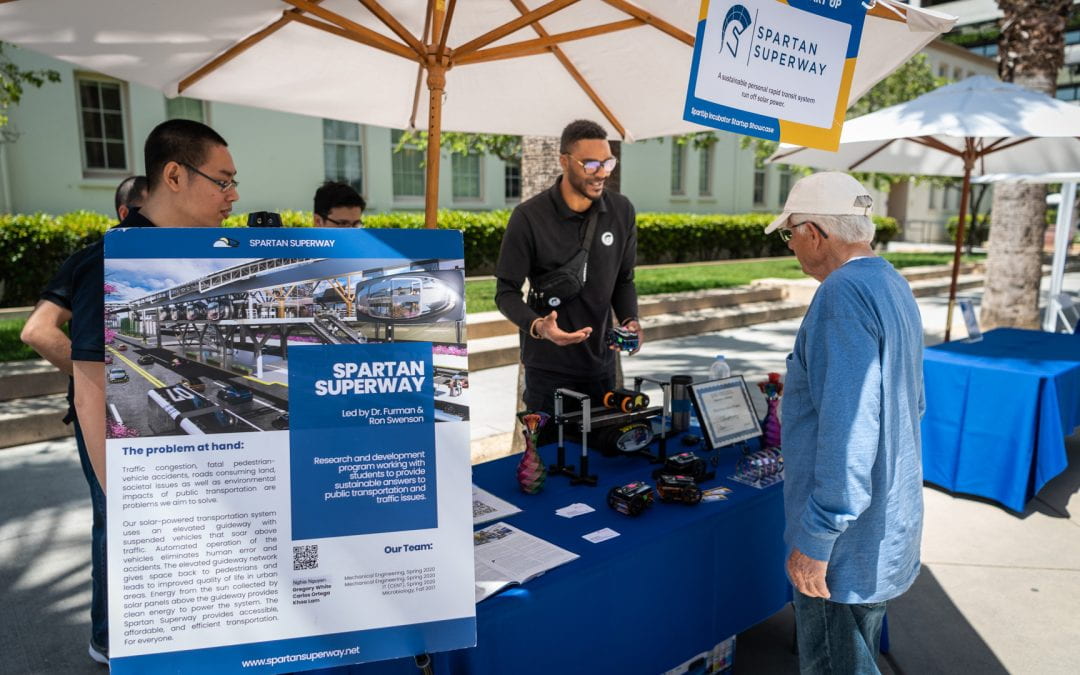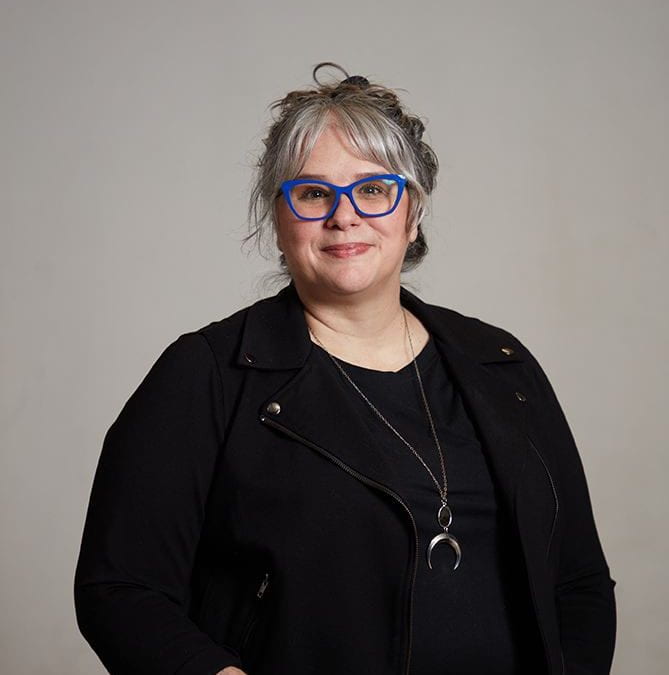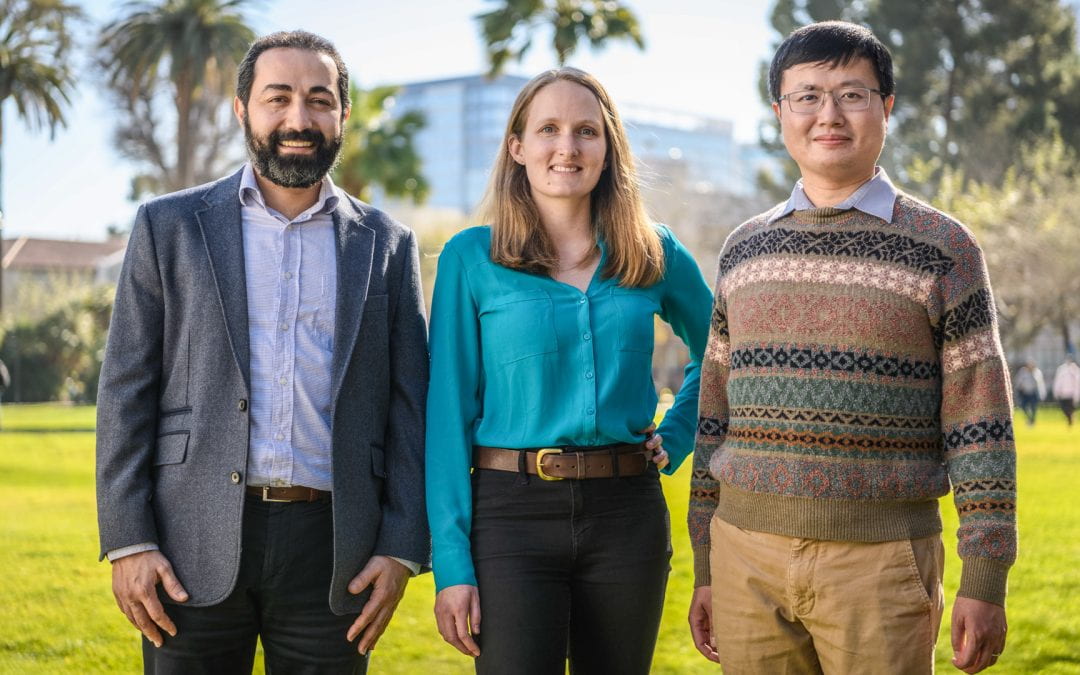How a ‘Lucky Accident’ Contributed to Nobel Prize-Winning Research

Katherine Wilkinson, associate professor of biology. Source: SJSU Research Foundation 2019 Annual Report
How exactly do we experience touch, temperature and pain? It’s a riddle that’s puzzled humans throughout history. In October, the Nobel Prize was awarded to two scientists who answered that very question.
But they might not have been able to do so without the expertise of Katie Wilkinson, associate professor of biology at San José State University. Using a specific technique she developed, Wilkinson collaborated with Ardem Patapoutian, one of the Nobel Prize-winning scientists, to test the presence and functionality of a specific ion channel in mice.
That ion channel, named Piezo2, was discovered by Patapoutian, a molecular scientist at Scripps Research in La Jolla, California, explained Wilkinson, and it’s directly linked to how we experience certain external stimuli like touch.
But Patapoutian wanted to understand to what extent. He wanted to know if it played a role in proprioception — that’s how our brains understand our physical presence in the world, Wilkinson explained.
Proprioception is Wilkinson’s specialty. One way to understand the concept, she said, is that someone whose proprioception is impaired will have difficulty with simple movements like walking, because they won’t know where their legs are without looking directly at them.
She confirmed that Piezo2 was directly connected to proprioception by using electrophysiological tools in her SJSU lab to record responses in mice who did and didn’t have the Piezo2 gene. She, Patapoutian and others — including two SJSU alumni who were then undergraduate students — wrote a paper confirming their findings, which was cited as research key to the Nobel Prize-winning discovery.
A successful failure
When Wilkinson was completing her postdoctoral research at Emory University, she experienced what she called “a lucky accident.” What started as an unsuccessful attempt to detect pain neurons in the muscles of mice unveiled a successful way to elicit a response from “stretch-sensitive neurons,” which are neurons (cells in the brain and nervous system) that respond to muscle movement. They’re also the neurons that are directly tied to proprioception.
“I realized that this could be a really helpful way to screen for dysfunctions,” she said.
By dysfunctions, she means diseases that might alter or disable those sensory neurons, also known as proprioceptors, which can lead to movement and balance issues. Today, Wilkinson’s lab is interested in understanding what causes these sensory neurons to malfunction, and that could lead to a better understanding of certain genetic disorders or side effects to treatments like chemotherapy.
Wilkinson had never worked with Patapoutian until he reached out to her in 2014 to collaborate. Since then, they’ve collaborated on another project — a study about the connection between Piezo2 and human disease, which will likely be published in early 2022.
Being connected to Nobel Prize-winning research is a huge win both professionally and personally, Wilkinson shared.
“It’s pretty awesome,” she said. “It’s much closer than I ever thought I would be to the Nobel Prize. It’s amazing, and it’s validating that this type of work is interesting enough to receive that kind of attention. The reaction I’ve gotten from a lot of colleagues in sensory neuroscience is excitement because, yes, people are recognizing that this is important.”
Miri VanHoven, associate dean for research in the College of Science, emphasized the magnitude of the accomplishment.
“The Nobel Prize is by far the highest prize that exists in science, and when it is awarded, it’s saying that this work is the most important work being done in science right now,” she said.
“They can, of course, only award it to two or three people, so what they do is cite a very small number of papers that are believed to be critical research articles in the scientific achievement that merited the Nobel Prize. This is an amazing accomplishment for Katie, the students she has trained, for the College of Science and for San José State.”
A more in-depth explanation of proprioception and Wilkinson’s lab research. Source: Wilkinson Neurophysiology Lab
Transforming lives in the lab
Wilkinson knew early on in her career that she wanted to teach research skills to undergraduates, which is a big reason why she chose to come to San José State after completing her postdoctoral research. SJSU is a primarily undergraduate institution, and the university’s College of Science places high priority on undergraduate research.
She runs a student-centered lab, meaning the students do as much of the work as possible. “I’m not even in the lab doing the hands-on experiments anymore,” she laughed. “It’s all the students.”
And that tends to surprise and impress outside collaborators like Patapoutian, she added. “I hear all the time, ‘You collected all this data with undergrads?’”
Still, Wilkinson didn’t foresee two of her students — Dasha Zaytseva, ’16 Physiology, and Connor Criddle, ’16 Biochemistry — authoring research that would be included in a Nobel Prize-winning discovery. Zaytseva said working in Wilkinson’s lab was her first introduction to the world of scientific research. Today, she’s a research associate at biotechnology corporation Genentech, Inc.
“Working in Dr. Wilkinson’s lab inspired me to continue research as a career,” she said. “She showed me the power of having a great mentor and that anything is possible if you just work hard enough and try.
“It is truly an incredible feeling knowing that I contributed to this work and something I would never have expected to happen in my life,” Zaytseva continued. “It really goes to show the importance of collaboration in science and that anyone can contribute — even a young undergraduate researcher.”
Criddle, who now works as an account manager at Visby Medical, a medical diagnostic startup, agreed.
“It’s an awesome feeling knowing that the long hours and effort put into this research had a dramatic impact on the science world,” he said.
That’s the power of teaching and learning at San José State, said Wilkinson.
“I see a lot of students blossom here,” she said. “We have a lot of opportunities for students to get involved in research, and I’ve even seen students who don’t have the best GPAs do really well in research labs and go onto Ph.D. programs. Maybe they’re even the first in their family to go to college, and then they go pursue graduate degrees. SJSU can be really transformative with the types of opportunities we give students.”




